
Author: Maha Khan Phillips
2021 saw plenty of political, social, and economic upheaval globally, and ended with the rising spectre of the Omicron variant. But what will 2022 bring? Leading industry professionals talk to Professional Investor about the key themes and challenges that will dominate the coming year.
At the top of their lists: the urgent focus on ESG and sustainability across value chains - as well as the unintended consequences of getting ESG wrong; greater reporting and disclosure; decarbonisation as an investment opportunity; the continuing need for flexible and agile working practices; macro uncertainty over inflation and rates; lower returns and new investment horizons; the continued rise of AI and robotics; increasing regulation and the need for increased innovation and collaboration in asset management. So what’s ahead for 2022?
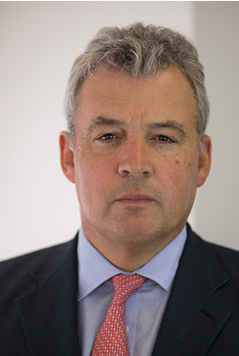
Without a doubt, the main impact to the investment industry will continue to be our working practices changing to a more dynamic and agile environment. ESG will undoubtedly expand its coverage across the public and private multi-asset space, and we should see ESG-related solutions being incorporated into overlooked areas of investing, such as public credit, private assets and alternatives – and we will likely see the UK diverge from the EU in this area as a result of Brexit. Moreover, the shift from DB to DC pension schemes should be revolutionary, giving savers more discretion and control over the impact that their investments and savings have on the world in which we live.
But some of the top concerns include the highly uncertain path for inflation and rates, and the risk from policymakers pulling back too early before markets fully recover. Furthermore, the pace of liquidity seems likely to slow next year, which will affect markets, leading to increased volatility, and larger drawdowns. Finally, other impacts could come from state sponsored actors, with the means and incentive to take down systems critical to our modern world, including, potentially, our financial markets.

As the world continues to adjust to the evolving challenges presented by the pandemic, I am encouraged to see our industry appreciating the need to effect change.
There is recognition of importance in two key, prevalent areas: ensuring diversity throughout all levels of our organisations for the betterment of outcomes; and ESG considerations as a core part of investments. The world is acknowledging that you invest with your values without compromise to return.
As leaders and countries around the world set in motion their action plans in response to the Cop26 conference, ESG can no longer be ‘in the future’. Rather, it’s a part of what we do by 2030. In order to be successful, the whole industry will need to come together and collaborate to solve for issues like data and taxonomy, signalling a step-change from previous proprietary work by individual asset managers.
Delivered as a crucial part of ESG investing, due to a stronger social agenda, are
considerations around diversity, equity and inclusion. As the focus on the industry has been to support the acquisition of diverse talent, it is important to support talent retention, through empowerment, training and mentoring.
I am personally passionate about leadership and supporting and nurturing people for the future. As we focus on 2022, I believe there will be a need for the evolution of a new paradigm for leadership: one of vulnerability, agility and humility. And today, bringing your full authentic self to work to deliver your unique value has potential to make a profound impact.
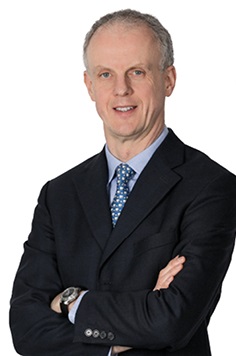
Post COP26, the race to “net zero” is on, but we’ve yet to agree on what this means or how to avoid unintended consequences. Forcing every emitting company to achieve net zero is going to be enormously wasteful as managers pursue inefficient options and/or spend shareholder funds on dubious offsets.
Meanwhile, ambitious but thoughtful development of business models based on natural capital, for example carbon credits from the creation of new wetlands, could both address meaningfully the climate crisis while also rewarding innovation.
Recent climate change discussions have focused on emissions and corporate net zero plans. Yet investors appear to be downplaying early warning signs that corporate assets may become uninsurable in the face of rapidly deteriorating weather patterns, or moribund e.g. oilfield prospecting, vehicle servicing. Over-enthusiastic application of green taxonomies by governments may stigmatise today’s essential services and starve of capital those seeking to switch to cleaner alternatives, such as steel manufacturers.

In 2021 we saw some real progress in the pace of decarbonisation. There was fantastic data on electric vehicle sales, for example, which are tracking well above 25% of new cars sold in many European countries. However, a lot of the reported numbers from companies have been blurred somewhat because of continued pressure on supply chains.
As we come out of Covid, decarbonisation is an unappreciated policy play, because transmission mechanisms haven’t worked as well as they should have done because of these pressures. There are also several new policy measures we are watching, including build back better in the US.
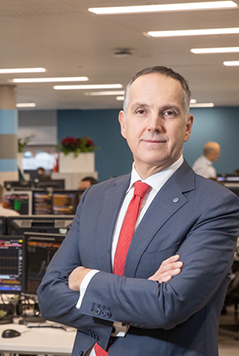
Looking into 2022 we believe the market will continue to offer great opportunities for quite some time, even if the investment environment could experience some volatility for equities and bonds.
For equity, we predict returns will not be driven by the same opportunities or themes we have seen in the past two years. We are currently in the early stage of the cycle and next year we will enter a more mature stage of this cycle where returns tend to be lower.
On inflation, history has shown that equities are one of the main assets that can protect wealth from the impact of inflation so equity investors should not be unduly concerned.
Regarding strategy, we think investors should stay invested and use any pullbacks
around rate tightening cycle to add companies, which will benefit from the structural trend of economic transformation driven by the transition to sustainability.
On fixed income, flatter not steeper yields curves are the biggest perceived risks. Likewise, countries that continue to restrict activity (e.g., China) look more promising as further monetary easing may be inevitable.
Inflation risks are close to fully priced now and would be looking to fade the current valuations priced into fixed income assets. Nevertheless, diversification will continue to remain key because interest rates, credit spread will be reacting differently among geographies and maturities.

There is fierce competition in our industry that requires permanent innovation and reinvention of organisations to survive. Future generations, who are already an important and current part of the workforce, but that do not share the same values with the old school finance industry, will urge asset managers to rethink their working culture and organisational structure.
Establishing a culture that promotes collaboration, trust between the top management and the workforce, client centricity and entrepreneurship often requires a fundamental transformation of the corporate culture. But top management needs to buy-in and help to further spread this culture through role modelling and reinforcing mechanisms. Transformation starts at the top of a body: the brain needs to change so that the body gets a chance to as well. Moreover, flexible work models that include remote work are going to be a way for employers to attract, retain and motivate the greatest talents.
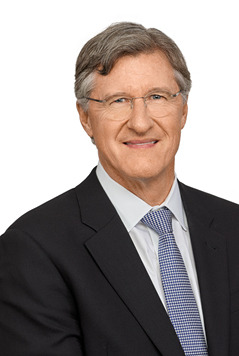
We expect actions by regulators, corporations and investors to increase the importance placed on ESG factors in investment decisions across global capital markets in 2022. We are in the early stage of building the necessary capital market infrastructure to fully price companies’ greenhouse gas emissions, people management impact, and board and employee diversity into security prices.
Stock and bond prices in 2022 will be affected by changes in how companies provide this information to investors, increased investor appreciation for the relevance of this type of information as well as expanded use of the information across investor types. Understanding these factors and system-level changes will become more important than ever as more investors incorporate ESG information into their investment decision-making process.
Currently, investors receive information about companies’ carbon exposure, human capital and diversity information from a range of non-standardised sources, such as company websites, corporate social responsibility reports, sustainability reports, company regulatory filings or simple estimates. However, government regulators around the world have indicated they will begin or advance requirements for the disclosure of carbon, human capital and some diversity data. We expect rules in major global markets including the US to have enough clarity to see a meaningful impact in 2022. A new environment of higher quality data will increase the need for expert ESG analysis to incorporate the information into securities prices.
Additionally, professional investor activism has reached a critical point and will drive the need for expert ESG analysis further in 2022. We expect companies to strengthen the rigor of their reporting and to create greater transparency. We believe the market may perceive higher risk exposures as this information change occurs. Investors and companies will quickly see that some companies are behind and a competitive dynamic will accelerate. One potential outcome is enhanced performance expectations for those companies with strong ESG management practices and investors initially seeking lower risk exposures across carbon, human capital and diversity.

2022 will likely go down in history as a watershed moment in the EU’s ESG regulatory landscape. Starting from the 1 st of January, we will see the EU technical screening criteria for climate change mitigation and climate change adaptation coming into force. The rest of the year will see the implementation of amendments to MiFID II, UCITS/AIFMD, IDD and Solvency II, as well as the application of the RTS ‘Single Rulebook’ (level 2) and SFDR Principal Adverse Impact standards at the fund level.
In light of this massive shift and acceleration in regulatory momentum, we largely
expect 2022 to represent the ‘year of ESG adaption’ – as players alter their operational and reporting strategies in order to ensure compliance. That being said, once the regulatory dust settles and players adapt accordingly – we believe that 2022 will truly set the scene for ESG investing to become the rule rather than the exception in the European asset and wealth management landscape.

We believe the broad market needs to place a greater emphasis on sustainability particularly in light of higher energy costs and changing weather patterns. Against this backdrop, markets are likely to be more selective into 2022. Cleantech and renewable energies will power the green revolution of the next decade. Currently most grids struggle with the intermittent nature of clean energy sources which could lead to sustained energy price volatility as we transition to a clean economy. Besides, the recent supply chain bottlenecks illustrated the weaknesses in these systems and encouraged companies to think more carefully about the sustainability of their operations longer term.
Now add the growing focus on responsible sourcing, understanding the impact across a company’s supply chain, and there are growing pressures for companies to make their supply chains shorter and smarter. This has positive implications for the increased use of both robotics and artificial intelligence (AI) technology.
In addition, exogenous risks such as climate change, geopolitical tensions, and the COVID-19 crisis have companies rethinking their dependence on globally integrated supply chains. With automation reducing onshore manufacturing and logistics costs, robotics could be a key beneficiary in the post-COVID world. We expect the industrial robotics market to reach $37 billion in sales by 2030, more than doubling in size from 2020.

Jens Wilhelm, Member of the Board of Managing Directors of Union Investment:
After two highly unusual years, 2022 will mark the transition to a more normal dynamic in the capital markets. However, investors should not take this as an invitation to sit back and relax. Quite the opposite. At the same time that the strong tailwind for the capital markets is weakening, the differences in how the individual asset classes perform are narrowing.
Nevertheless, there are new investment opportunities arising as a result of structural change, particularly where the transition to a green economy is concerned. The use of sustainable investment criteria is becoming increasingly important in light of this massive transformation. Decarbonisation is the key term here. Success in the stock markets in 2022 will, on the whole, be contingent more on whether the right stocks and the right sectors are picked and to tactical activity. In any case, the growth outlook remains positive and this means there is a good chance of achieving this success as the markets find a new post-pandemic equilibrium.
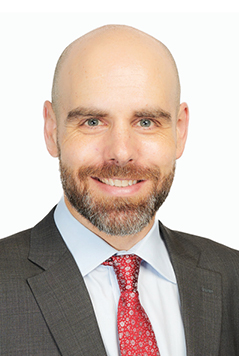
2022 is likely to represent a continuation of the recovery story. There remains some natural buoyancy as economies gravitate toward normal unemployment rates and as businesses edge back to their full capacity.
We see further room for faster-than-normal growth, largely from two sources. Consumers are in a wonderful position: they have accrued additional savings over the pandemic, debt servicing costs are low and job creation has been quite robust. Businesses are also expressing optimism, with the intent to engage in enthusiastic capital expenditures and build inventories.
However, 2022 growth is unlikely to match that of 2021, and may also land somewhat below the consensus due to several headwinds. These include high inflation, supply chain bottlenecks, a Chinese slowdown, less generous fiscal and monetary support, and a new virus variant. China may end up with sub-5% growth due to a weaker housing market and a broader regulatory crackdown.
Monetary and fiscal tightening will both take some wind out of the sails of the global economy. Meanwhile, the Omicron variant seems likely to induce another global wave of infections, with cascading effects on the global economy. All of this is to say that a continuation of the economic recovery remains achievable, but not to the enthusiastic degree of last year.
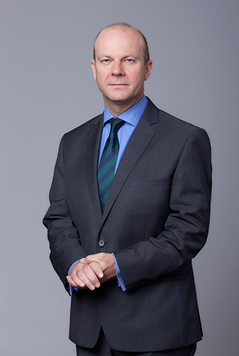
Persistently above target inflation and rising inflation expectations is challenging the ‘transitory’ narrative that underpins central banks’ forward guidance for a very gradual path of monetary tightening. Volatility in short-term interest rate markets has risen and is likely to stay elevated in 2022 as central bank bond buying declines and incoming data, especially on inflation, dominates central bank forward guidance.
Despite some push back from central banks, markets have brought forward the ‘lift-off’ in policy rates for major central banks, including by the US Federal Reserve (Fed). But even as investors anticipate somewhat earlier rate hikes, the expected path of rate hikes remains gradual by historical standards and the endpoint of the rate cycle – the terminal rate – and long-end yields have not moved much higher.
We believe the current market pricing for ECB rate hikes in early 2023 is too aggressive, as underlying inflation pressures are not as acute as in the US (and UK) and the ECB will wish to avoid a premature tightening given that it is at the effective lower bound for policy rates.

Global inflation prints are still running high and many of the most influential central banks are yet to raise rates. And while central banks may want to remain supportive during periods of coronavirus-related stress, they will have to act if inflation looks set to become persistent.
A major indicator of persistent inflation is average earnings increases surpassing the rate of inflation. With labour markets already tight, and considering strong wage growth in 2021 compared to historical standards – especially in the US and the UK – we plan to keep a close eye on average earnings increases in the first quarter of 2022. Bumper pay rises could encourage more persistent inflation, leading to a more aggressive cycle of interest rate rises.
Regardless, interest rate rises are coming, and government bond yields will trend higher as a result. And with long-dated bond prices more exposed to interest rate risk, we expect long yields to rise globally. With this in mind, moving into shorter duration products will help investors to preserve capital, while global diversification is also advised to help reduce concentrated market risk. In the UK particularly, with quantitative easing ending in December and with the highest planned net gilt issuance for 10 years in 2022, there is potential for weakness relative to global markets.
#Whatsaheadfor2022?














